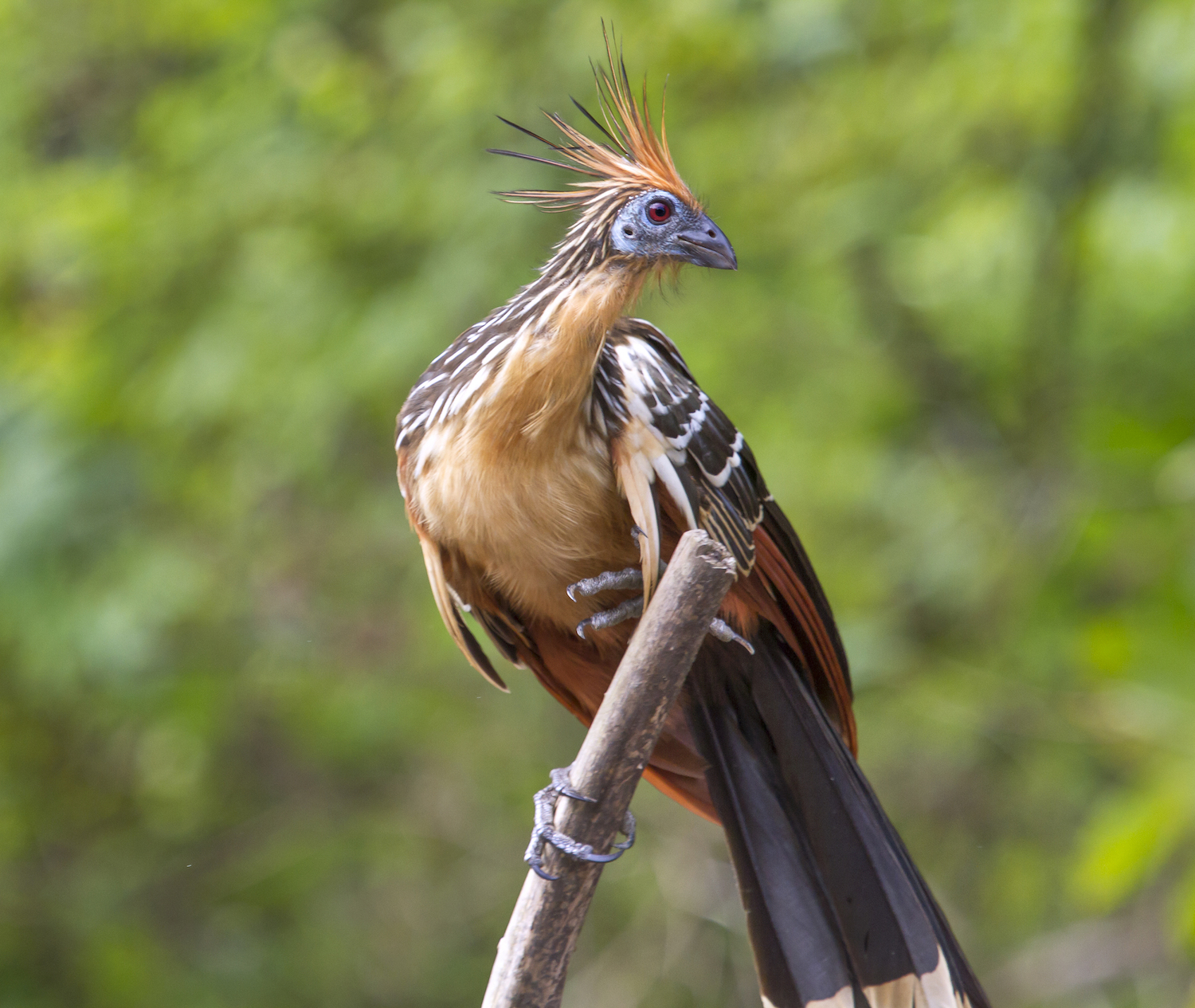
With claws on its wings, a pungent, foul odor that deters both humans and predators alike, and a spiky mohawk on top of its head, the Hoatzin, pronounced as both “what-seen” and “ho-aht-sin,” seems like the type of creature that J.K. Rowling might have written into the Harry Potter universe. However, this bird is very real and is home to the swamps and forests of the Amazon basin in South America.
Their name is said to be derived from the Nahuatl language of the Aztecs, which originated in the seventh century CE and is still spoken in Mexico today. The Hoatzin is the only member of its genus, family and order, and since it was first described in 1776 by German zoologist Statius Müller, there has been much debate in the scientific community over whether hoatzins are more closely related to cuckoos or turacos. Most recently in 2015, research indicated that they are the last surviving member of an old lineage of birds that branched off in their own direction more than 64 million years ago, right around the time that the extinction event killed off the last of the dinosaurs.
Hoatzin breeding occurs during the rainy season, which varies between December and May. The exact time at which they breed, however, depends on where exactly in the Amazon a particular hoatzin’s territory is. Typically, a pair will lay two or three eggs at a time, which incubate for 32 days. Hoatzins are extremely territorial, and because ideal nesting locations are scarce, their territorial nature intensifies during breeding season and breeding pairs display aggressive postures, series of loud noises, and ritual copulations.
Nests are built close to lakes and slow-moving rivers, often times in tree branches that extend over the water. Since Hoatzin chicks aren’t able to fly until they are at least seventy days old, their claws allow them to do one of two things, should they find themselves in danger. They can belly flop out of the nest and into the water, wait for the predator to leave, and then use their wing claws to make their way back to shore, climb up the tree, and back into the nest. Or, they can use their claws to make their way up and around the tree trunk and branches as needed to evade danger. By the time Hoatzins reach adulthood and are able to fly, their claws disappear. Young Hoatzins typically live in their parents’ territory for several years after birth, and will help “babysit” the new brood during this time. Once grown, adults are pheasant-sized with brown, yellow, and white feathers, and have a featherless, blue face, maroon eyes, and a distinctive reddish-brown, spiky crest on the top of their heads. They are also very vocal birds, often spreading their wings while making a variety of hoarse groans, croaks, hisses, and grunts.
Hoatzins are strictly herbivores, and are the only birds in the world whose diet consists almost exclusively of leaves along with some flowers and fruit. To accommodate their plant-based diet, Hoatzins have a digestive system that works much like that of a cow. They have enlarged crops and multi-chambered digestive tracts with little “stomachs” where their digested food can sit to ferment. This fermentation and the bacteria needed to break down the plant material results in hoatzins emitting a foul odor, giving them the nicknames of “stinkbird” and “skunk bird.”
Although their habitat is secure and they are not currently threatened or endangered, spotting a hoatzin in the wild is rare. Seeking the help of a trained guide if you decide to visit the Amazon rainforest and basin area is your best chance at encountering one of the world’s strangest birds in person. If you’ve ever traveled to the Amazon and have seen a hoatzin, be sure to leave us a comment letting us know!